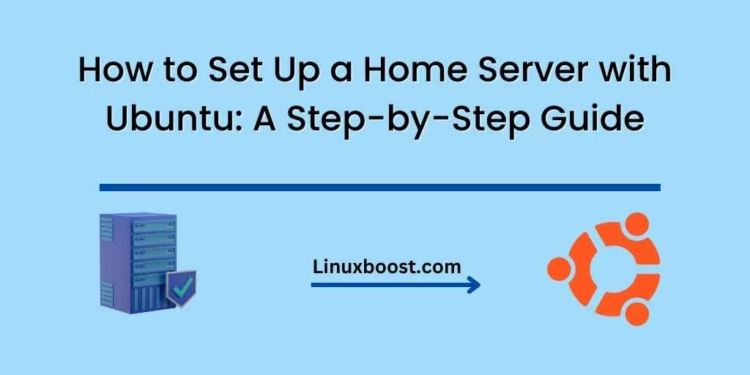Setting up a home server using Ubuntu can be a great way to centralize your data, host a website, or run various services. In this step-by-step guide, we will walk you through the process of setting up a home server with Ubuntu. We’ll cover everything from hardware requirements to software installation and configuration.
Table of Contents
- Prerequisites
- Install Ubuntu Server
- Configure Network Settings
- Install and Manage Software Packages
- Set Up a File Server
- Set Up a Web Server
- Automate System Administration Tasks
- Monitor System Resources and Performance
- Secure Your Ubuntu Home Server
Prerequisites
Before you start, make sure you have the following:
- A dedicated computer or server hardware with adequate resources
- A stable internet connection
- A copy of Ubuntu Server
Install Ubuntu Server
First, download the Ubuntu Server and create a bootable USB drive or burn it to a DVD. Insert the bootable media into your dedicated server hardware and boot from it. Follow the on-screen instructions to install Ubuntu Server on your system.
- Choose your preferred language and keyboard layout
- Configure your network settings (you can use DHCP for automatic IP assignment or set a static IP address)
- Set up a new user account and password
- Select any additional software to install (e.g., SSH server, LAMP stack, etc.)
- Wait for the installation to complete and reboot the system
Once the system reboots, log in with your newly created user account.
Configure Network Settings
After the installation, ensure your network settings are correctly configured. To do so, follow our guide on How to Configure and Manage Network Settings in Ubuntu.
Install and Manage Software Packages
Now that your Ubuntu Server is up and running, you can install and manage software packages using apt and snap. Check our tutorial on How to Manage Software Packages in Ubuntu to get started.
Set Up a File Server
A file server allows you to store and share files within your local network or even remotely. You can set up a file server using Samba or NFS. Follow our guide on How to Set Up a File Server on Ubuntu Using Samba or NFS to configure your file server.
Set Up a Web Server
A web server allows you to host websites or web applications. You can choose between popular web servers like Apache or Nginx. We have detailed guides for setting up both:
Follow the guide that best suits your needs.
Automate System Administration Tasks
To automate system administration tasks and simplify server management, you can use tools like Ansible. Our tutorial on How to Automate System Administration Tasks in Ubuntu with Ansible will help you get started.
Monitor System Resources and Performance
Monitoring your server’s resources and performance is crucial for maintaining a stable and efficient system. To learn how to monitor system resources and performance in Ubuntu, follow our guide on How to Monitor System Resources and Performance in Ubuntu.
Secure Your Ubuntu Home Server
Security is an essential aspect of any server setup. Ensure your server is secure by implementing firewall and AppArmor policies. For detailed instructions, refer to our guide on How to Secure Ubuntu System with Firewall & AppArmor Policies





